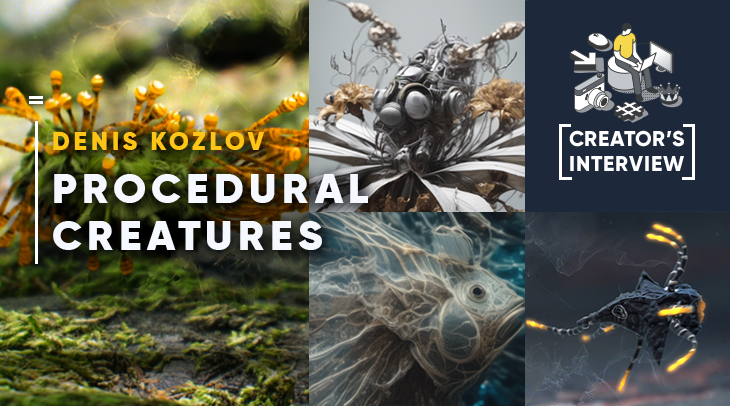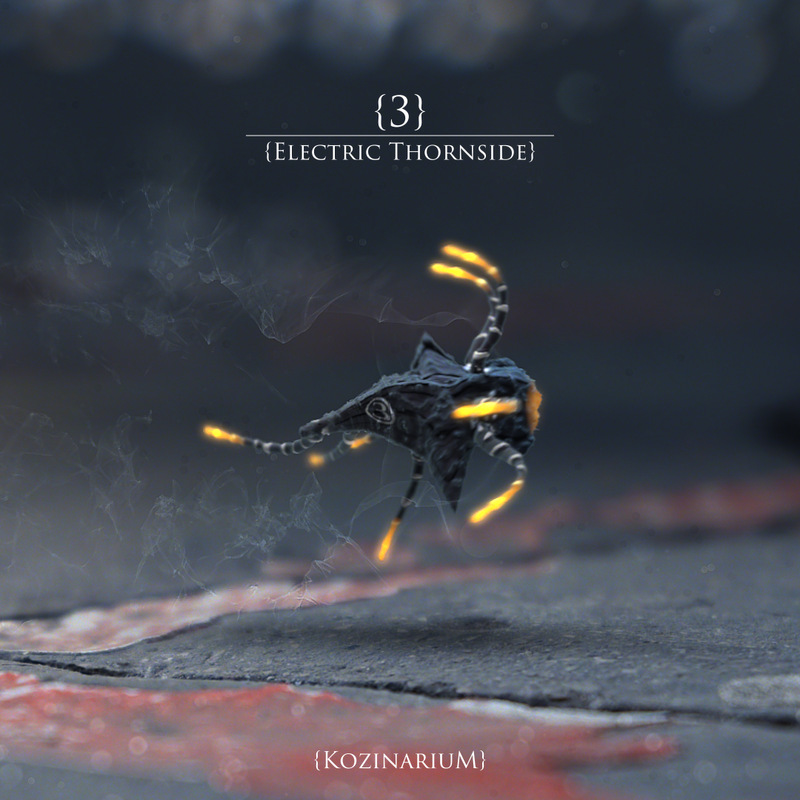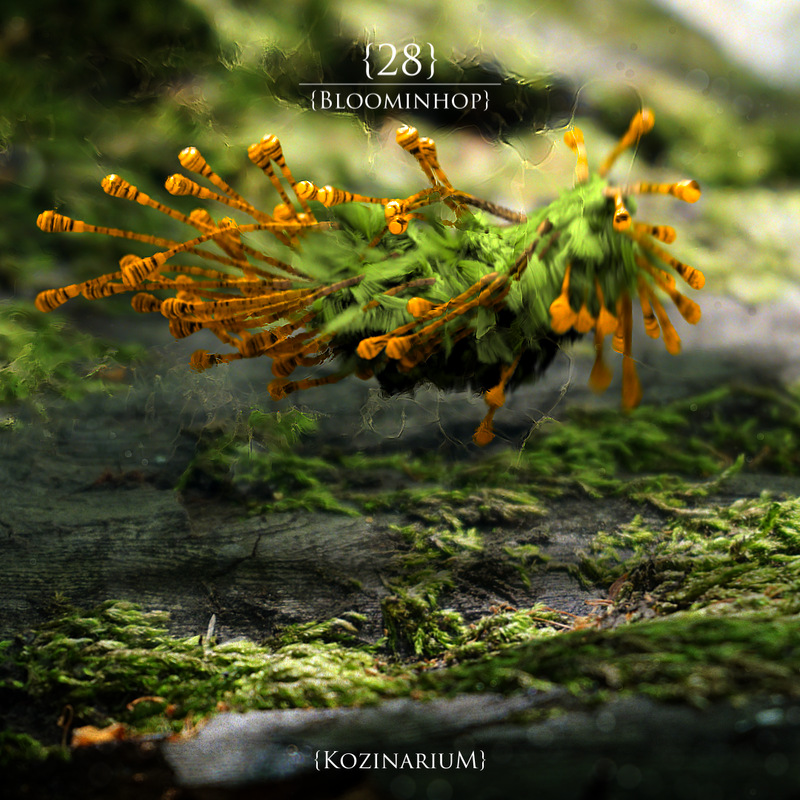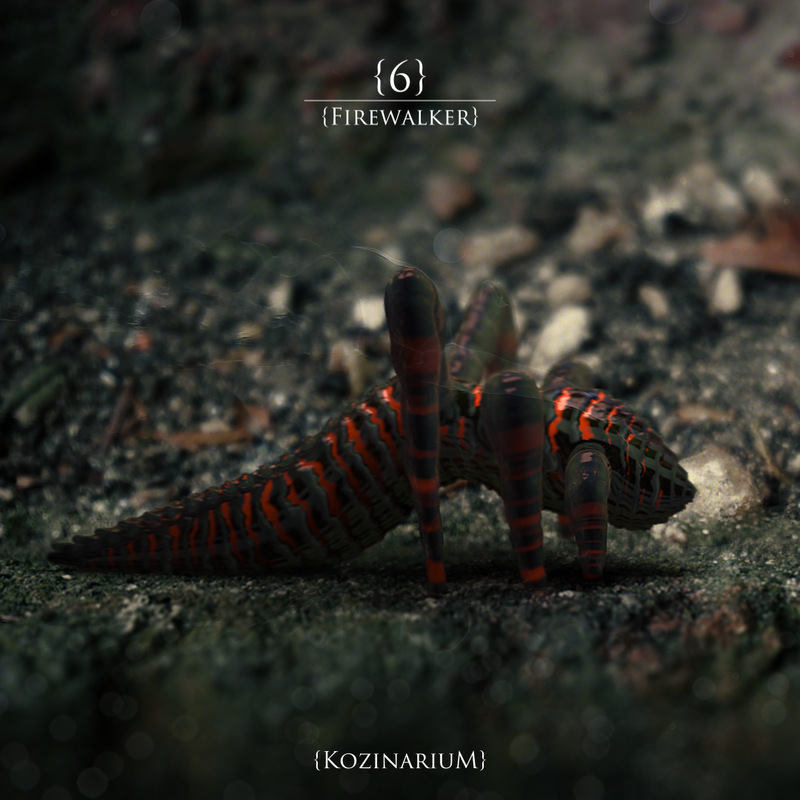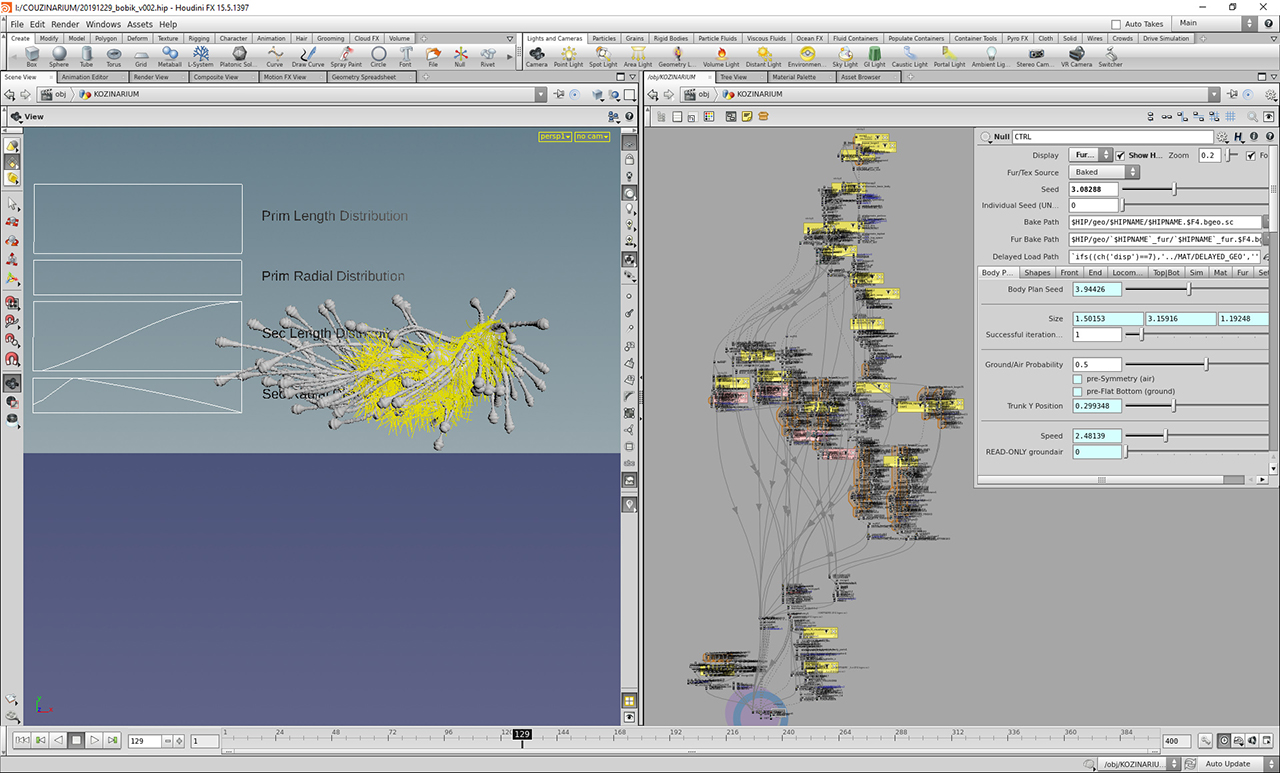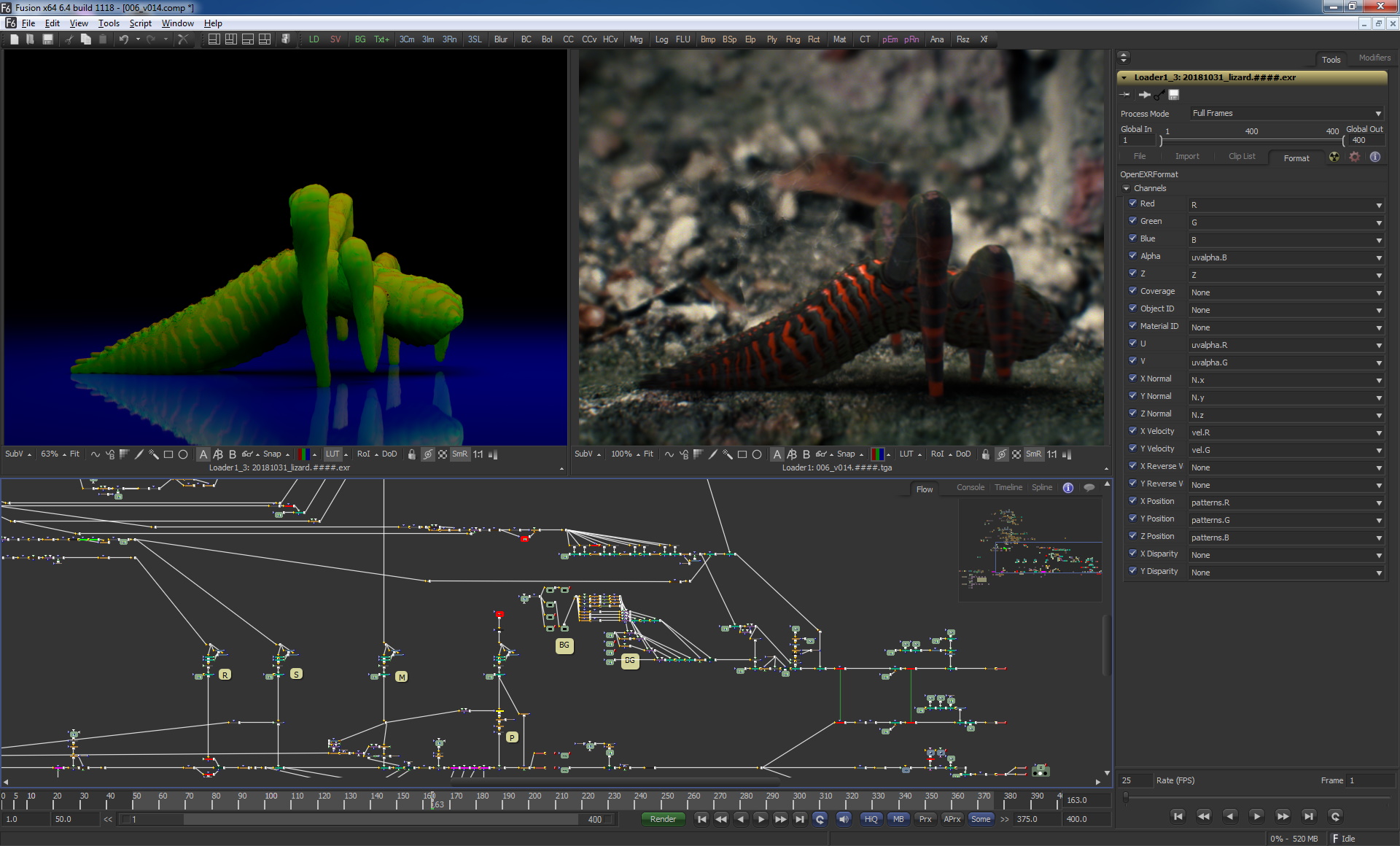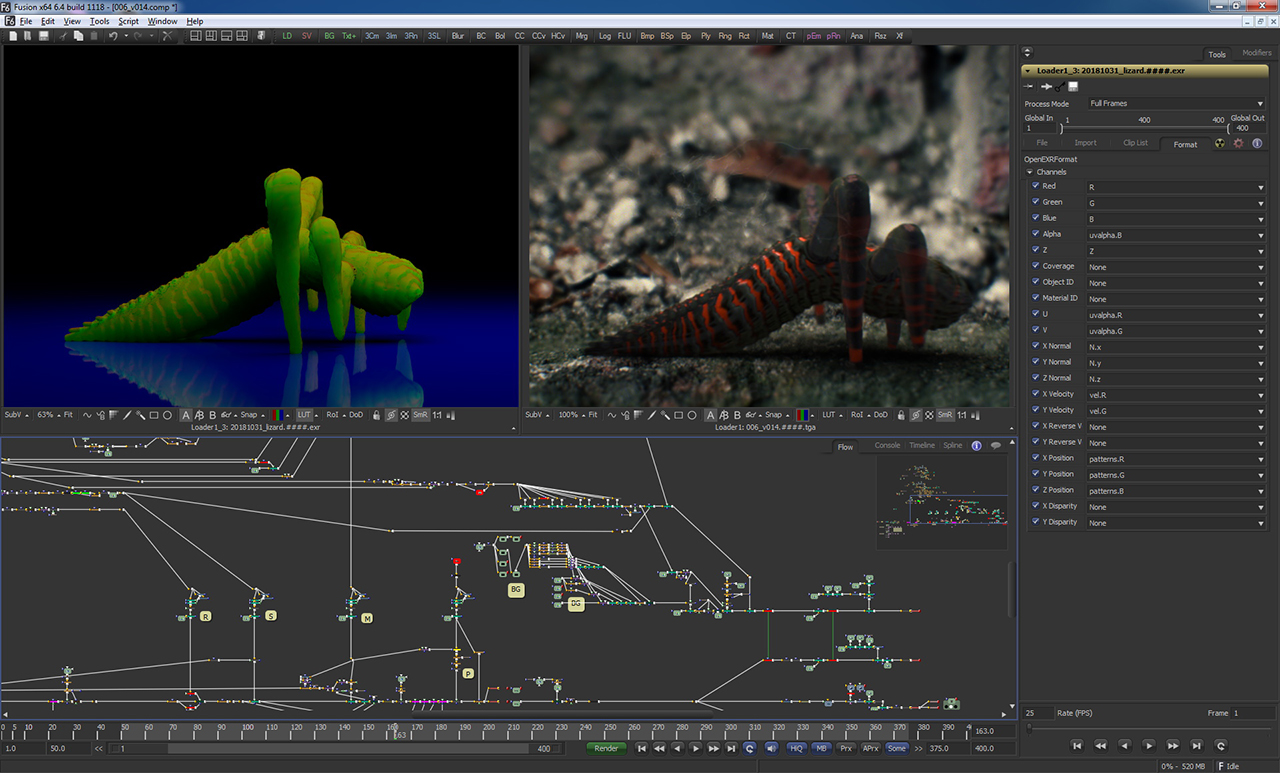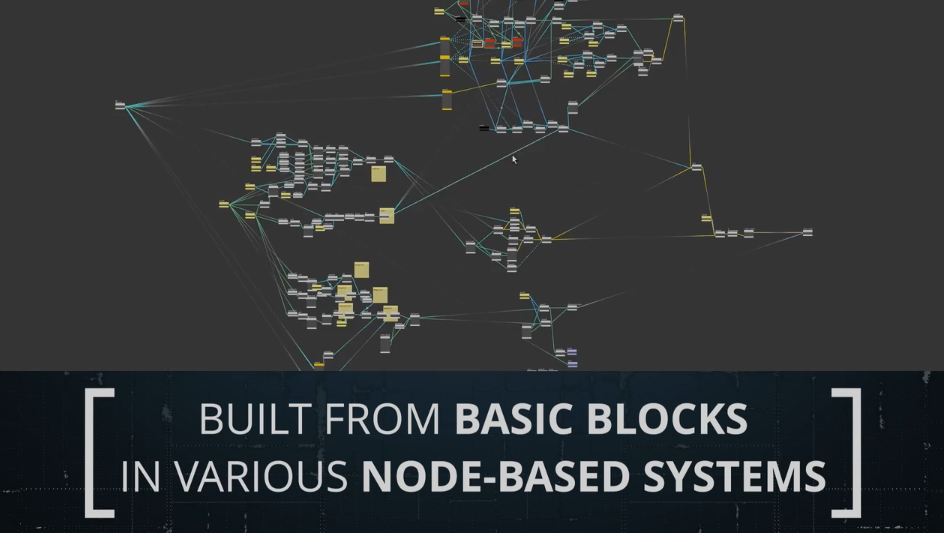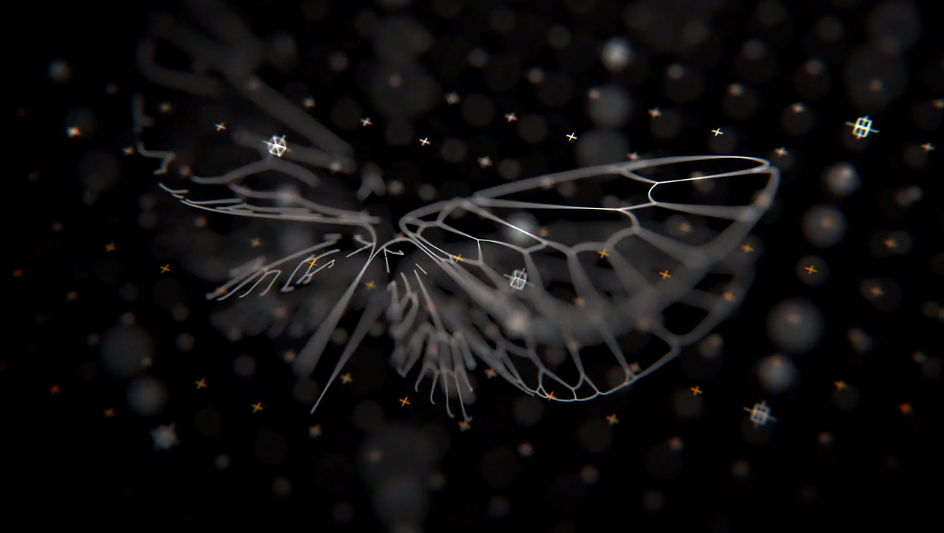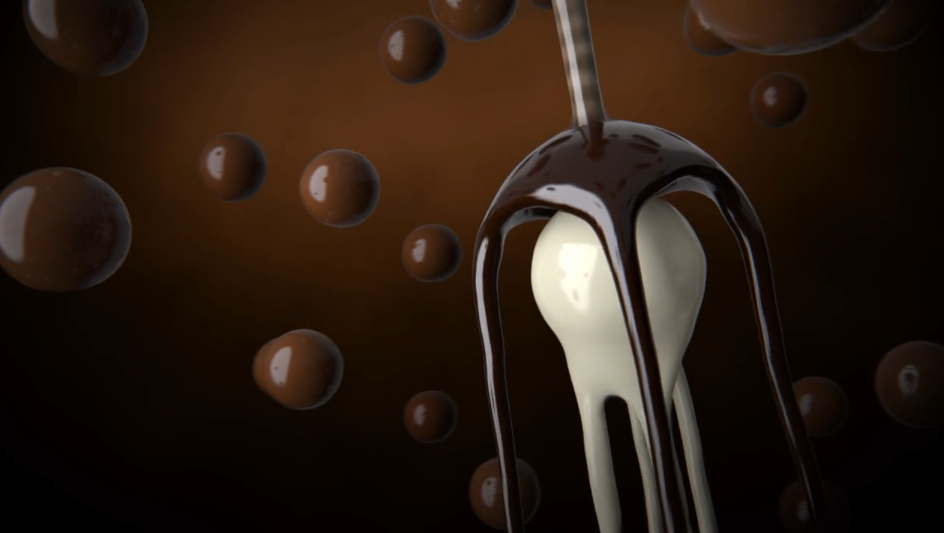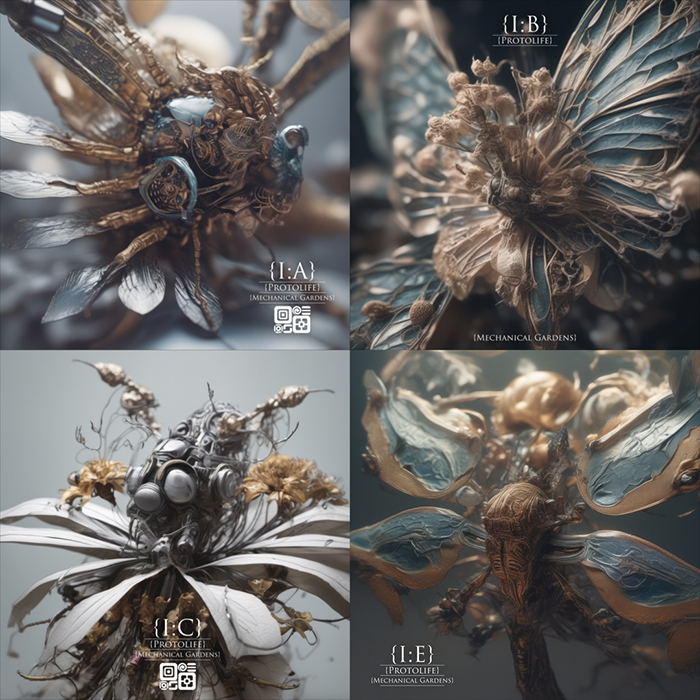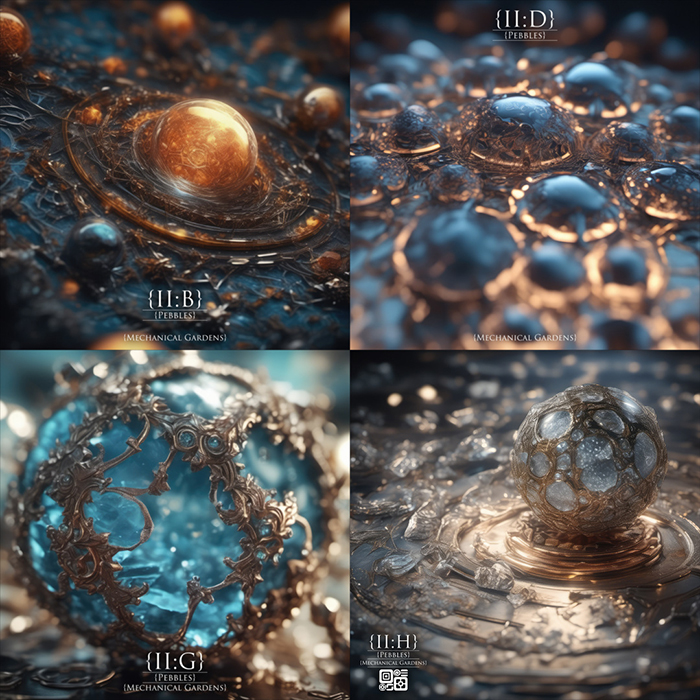With this post, we kickstart a new series of collaborations/interviews with artists we deeply admire here at Tsugi. And there is simply no better way to start than with Denis Kozlov, creator of the Kozinarium, a procedural bestiary full of mesmerizing creatures. Join us as we discover how procedural techniques have become part of Denis’ creative process.
Hi Denis, it is great to catch up with you. Can you tell us a bit more about you and your artistic journey? Did you begin with traditional medium?
Hi Nicolas and thank you so much for inviting – it’s my huge pleasure! While I do some traditional work, my main medium has always been CGI – it has pretty much started when I was 12 and a friend told me there’s such thing as computer graphics: “It’s when they draw it with a computer, you know” – I didn’t, but I loved both drawing and computers, so got hooked immediately:) Took few more years to get the first tools and skills and since then it was pretty much following the path – first TV and advertising, then gamedev and feature films, both 3D and compositing – any opportunity to “draw with a computer” I could lay my hands on. Currently Prague-based and still doing pretty much that:)
How did you get started with procedural techniques? Was it more out of curiosity, or did you feel that it was the ideal solution for one of your works?
I think it’s largely the personality type. “You can’t dance the architecture” they say, and beyond stressing the uniqueness of each art form, to me it also states the difference between what I call “the arts of the moment” (like dancing or calligraphy) and “the planned arts” (those where you can actually undo:) – I’m clearly the latter type.
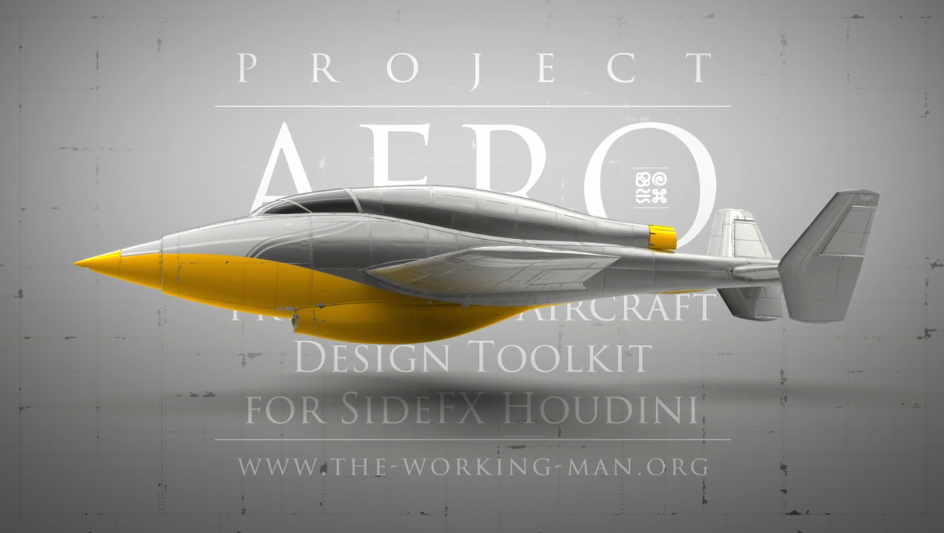
It’s already in my first working years in the late 90’s when I’ve started noticing a special kind of enjoyment from tinkering with procedural textures and assembling small parametric setups with modifiers in 3DSMax.
Later I began conceptualizing some bigger systems and looking for the ways to implement them, which brought me to Houdini and in 2015 I’ve released my first substantial project – a procedural aircraft design toolkit. That was a fun time to do since Houdini wasn’t really considered a modeling tool:)
More specifically, how was the Kozinarium born? What was the incentive to use procedural generation on this project?
Funny enough, it was much the other way around – at some point I’ve made a procedural creature design toolkit as a technology demonstrator and Elena – my wife and Kozinarium co-author – said she’d actually love to play with it, so I’ve built a little pipeline and we started making those little guys – “Kozinaks” as we call them. The generator is only a one step in the process which includes background photography, sound, VFX and a lot of very serious compositing to name a few.
Can you describe a bit your workflow and how the creatures were generated? Where does the diversity come from? Are any genetic or other biology-based rules used?
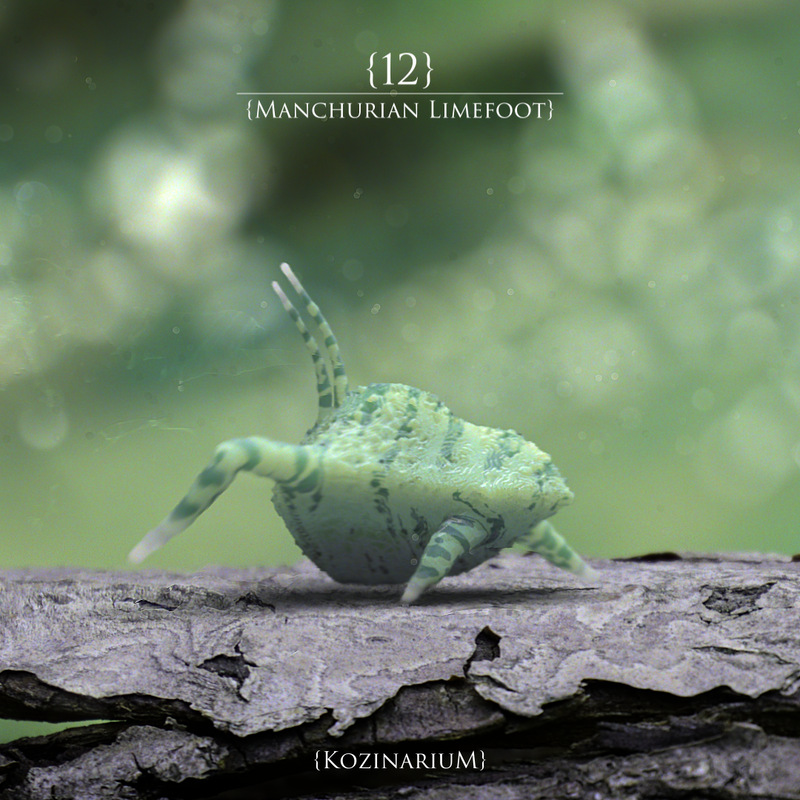
This is a very good question because diversity is a major concern in the design of a procedural system. If we’re talking the core 3D generator module of Kozinarium, I’ve been doing a lot of research and was indeed considering implementing some genetic approach (Sean Carroll’s book Endless Forms Most Beautiful and the concept of Hox genes were quite an influence). But in the end the two main tricks which made it were A) to stick with invertebrates as they can support a wild form diversity while still staying believable, and B) to conceptually generalize the body-forms, limbs and locomotion types to allow for a maximum variation and interoperability with a minimum number of parameters. The use of SDFs facilitates this flexibility as well.
How much of the process is hard-coded vs random selections by the machine? What level of freedom does the system have to create the creatures?
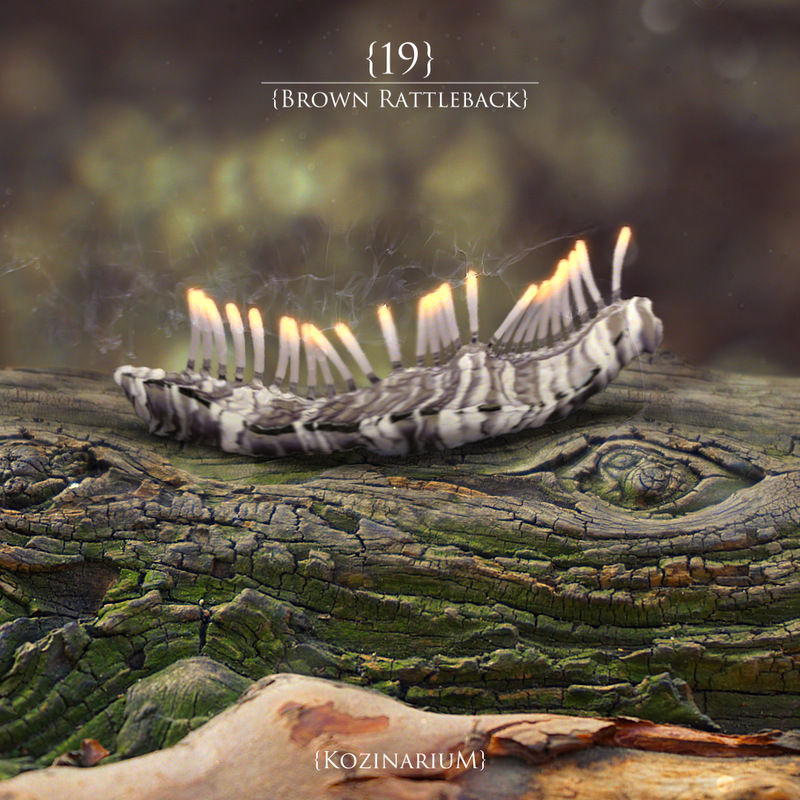
The system is designed to work both ways – all controls are accessible to both the artist and the RNG – you can choose which ones to roll the dice on and which ones to override. Elena usually prefers to design more manually, while I often enjoy generating a bunch of candidates and starting work with curation.
Generative systems can theoretically create an infinite number of results. What criteria did you use to select the creatures you published?
I’d say it’s the usual artistic decision-making: you either drive the visual towards the intention you have in mind or celebrate the happy accidents as they happen – it’s not that different from deciding on where to place the brush strokes – the tools are just the tools in the end.
Plus as I mentioned the generative 3D system is only one element in the pipeline. Once the shapes and motions are there I’m creating the actual look and shading for each creature in compositing – this process is procedural in the sense that it can be automatically repeated and transferred to different Kozinaks, but it’s also very intentional as well as creative and demanding (and is arguably my favorite stage) – it’s much more like painting each creature’s look with basic math than anything else – “drawing it with a computer”.
And then we come up with the story for each of them which binds all the elements created so far together (or turns the previous ideas totally upside-down:)
You have been using procedural techniques for other types of projects as well, can you tell us a bit more about them?
I’d better show:) – here are some of the video demos I’ve put together over the years:
And if you like them there’s more at https://vimeo.com/kozlove with additional details on my website https://www.the-working-man.org/
Recently, you also have been experimenting with AI. This new work also includes creatures such as insects and fishes for instance. How do generative AI and procedural techniques differ in terms of workflow and the amount of control that you have on the results?
This AI art project (a part of what I call Mechanical Gardens) has been all about exploration rather than control – I’ve been exploring the same artistic space I do with CGI as well as the technology itself, and I’ve learnt a lot about both. I think of it as taking a camera and going down the latent space to try and capture the art that could’ve been but never happened.
As for the differences in the approaches, I would say that procedural and generative AI systems symbolize the opposite ends of the same spectrum. They solve essentially the same task of high-level creation of visuals: machine learning approaches it computationally while proceduralism analytically. Procedural systems are much more about control and understanding – the author knows exactly what’s going on under the hood and the output is precisely what’s expected. Generative AI systems are largely black boxes inside with a level of uncertainty in the output, but they are cheaper and scale much better which (for better or for worse) is really hard to beat when it comes to commercial use.
I believe that generative AI is a fantastic technology which revolutionizes the way we create and makes it much more accessible to everyone, but I also see a lot of problems with the current implementations and especially the training data – we absolutely need cleaner datasets. I also believe that much better systems can be built from the symbiosis of procedural and generative/ML approaches, and I hope they will be.
Adding sounds to the creatures
The videos accompanying this interview were provided by Denis and show various creatures from the Kozinarium. Our sound designer crafted some patches in GameSynth to sonify their movement (the new video playback came in handy) and to add some background ambiences, for fully procedural creatures!












